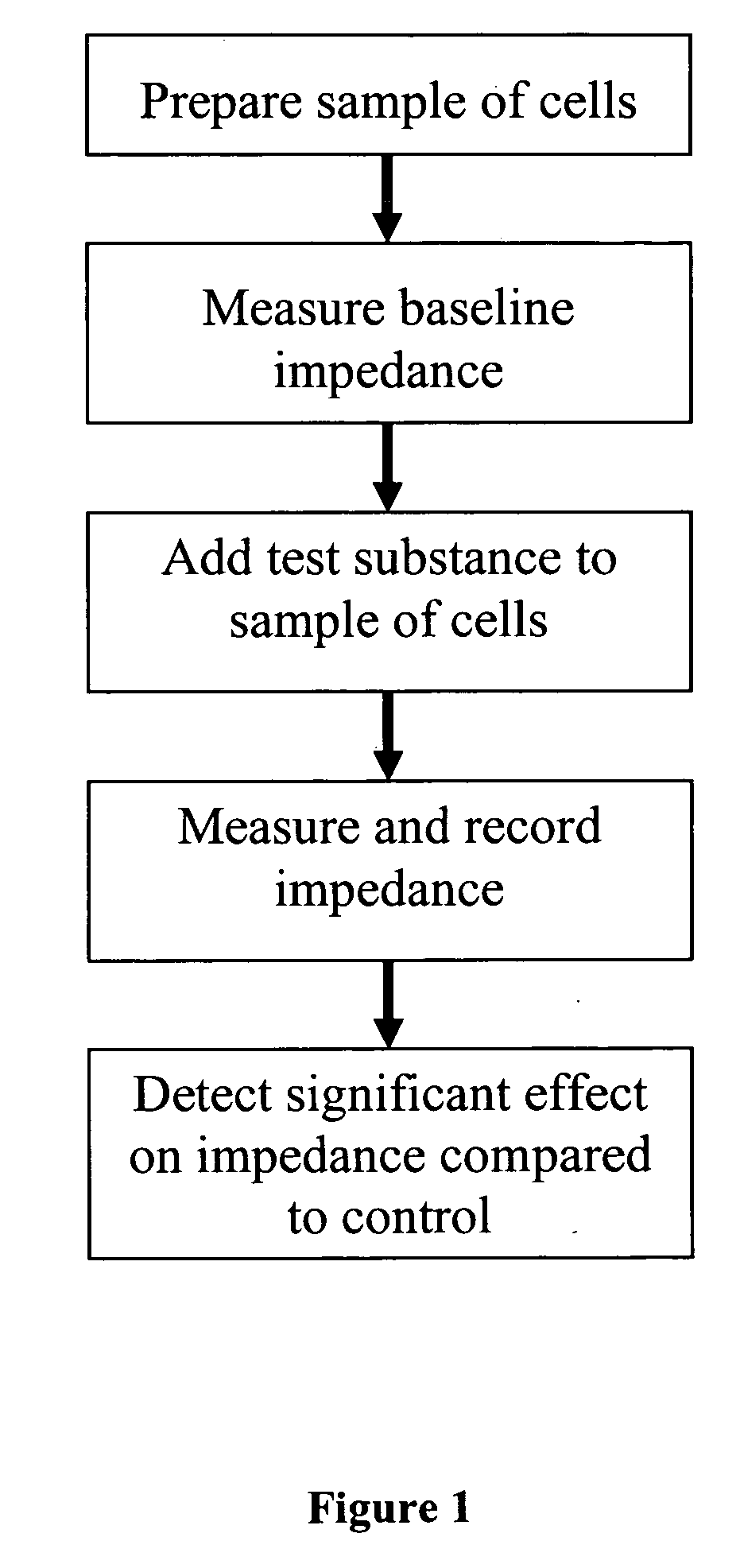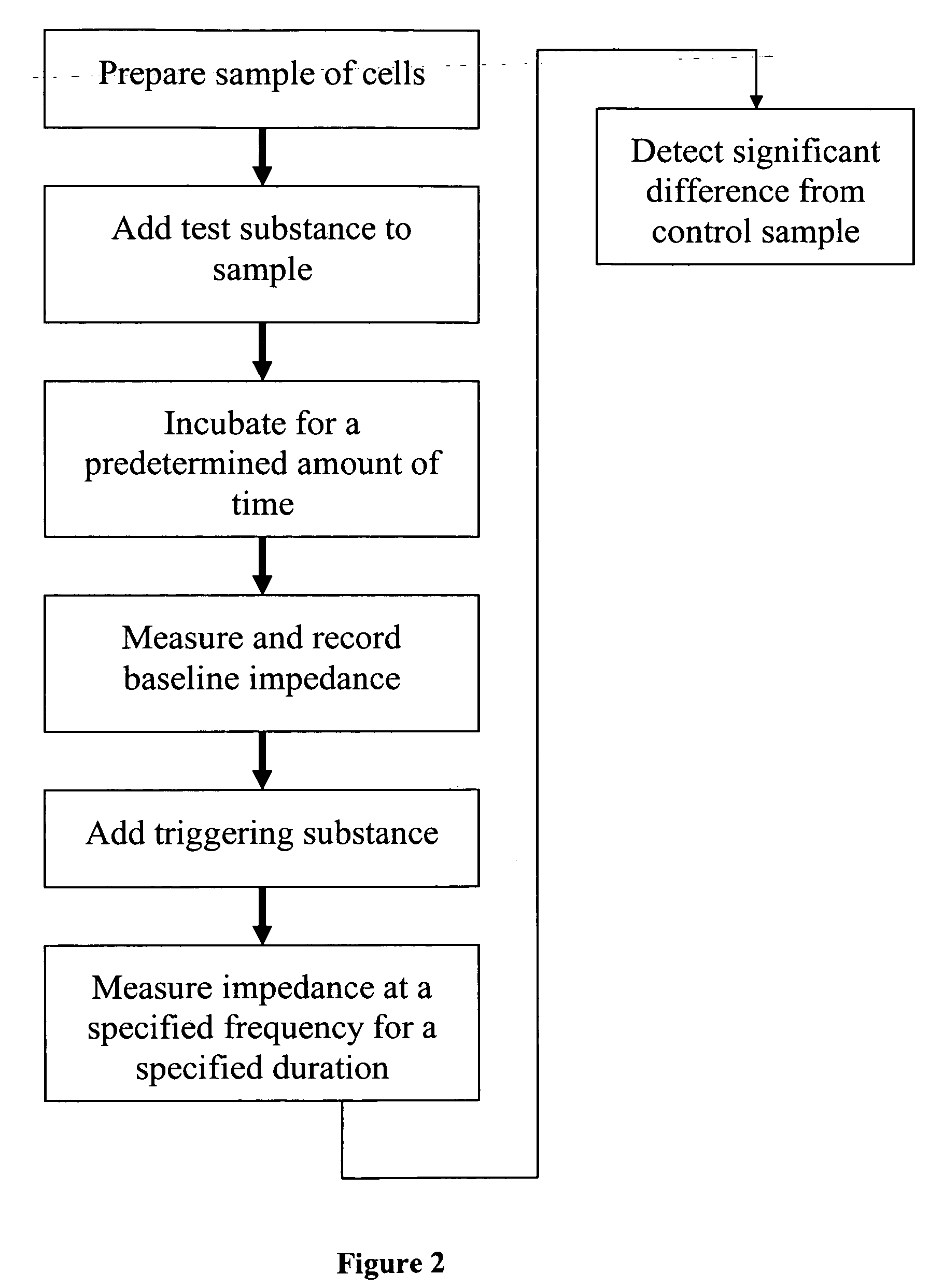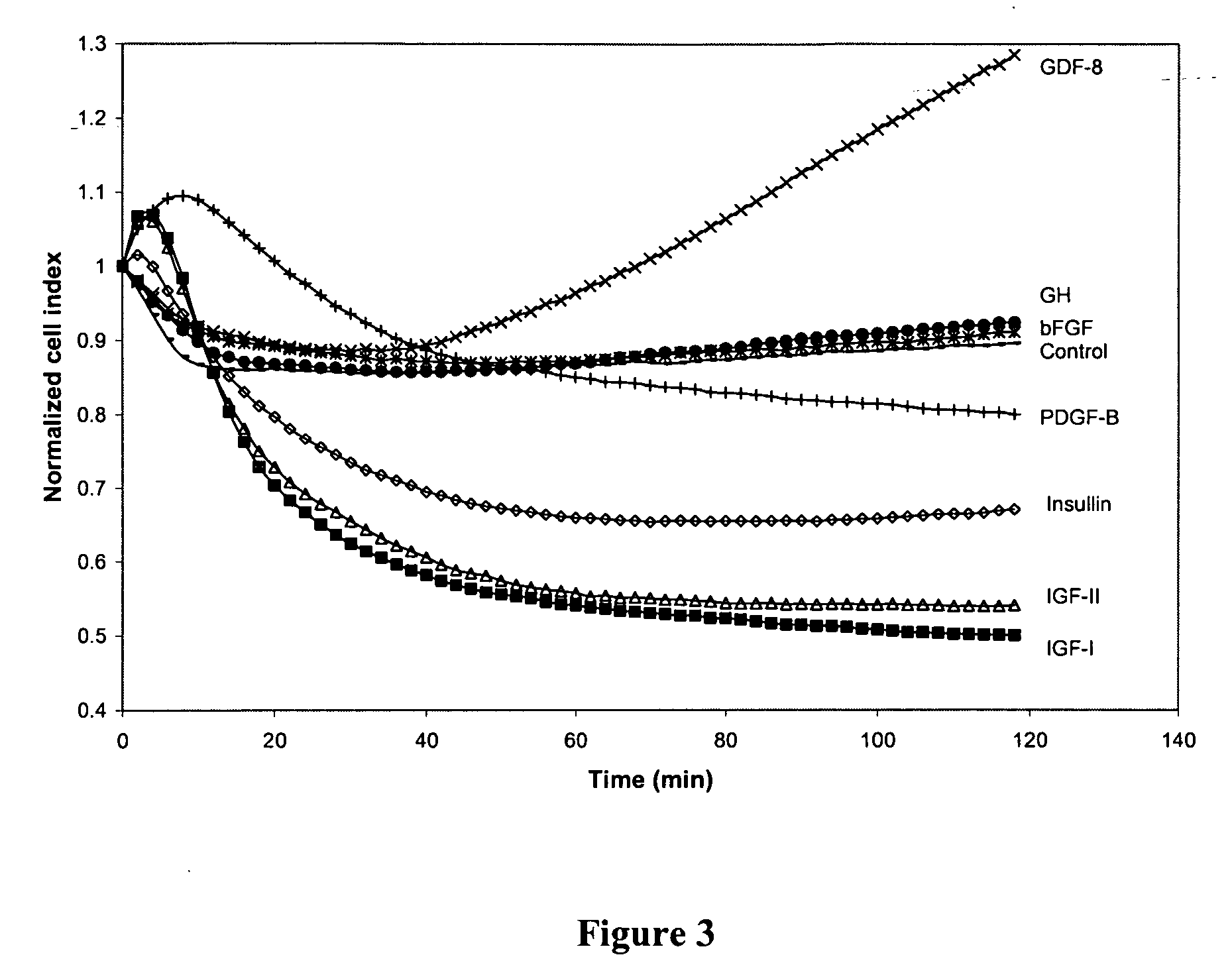Methods of and compositions for stimulation of glucose uptake into muscle cells and treatment of diseases
a technology of muscle cells and glucose, applied in drug compositions, peptides, metabolic disorders, etc., can solve the problems of increasing mortality, many hospitalized patients are insulin deficient, and in critical and trauma patients, so as to promote cell survival, inhibit the apoptosis of muscle cells, and induce utrophin expression.
- Summary
- Abstract
- Description
- Claims
- Application Information
AI Technical Summary
Benefits of technology
Problems solved by technology
Method used
Image
Examples
example 1
Cell Index in Response to Insulin Decreased in a Dose-Dependent Manner in L6 Muscle Cells
[0282] Our earlier impedance experiments (schematized in FIG. 1 and FIG. 2) showed that insulin decreased the cell index in a dose-dependent manner in rat L6 muscle cells, as measured in an impedance assay. That is, as the insulin concentration increased, the cell index decreased. The impedance assay was run using an RT-CES™ 16× device (ACEA Bioscience, Inc., San Diego, Calif.) substantially according to manufacturer's instructions, except where otherwise indicated. Briefly, each well of each 96 well plate was coated with 0.1% gelatin, and about 104 rat L6 muscle cells (obtained from American Type Culture Collection “ATCC,” Manassas, Va., USA) were seeded into each well in alpha-minimum Eagle's medium containing 10% (v / v) fetal bovine serum, 100 units / ml penicillin G, 100 μg / ml streptomycin, and 0.25 μg / ml amphotericin B (hereafter, the “growth medium”). The cells were incubated overnight in a ...
example 2
Other Factors that Affect Insulin Signaling also Decrease Cell Index in L6 Cells
[0283] Our experiments further showed that other factors that affect the insulin-signaling pathway also decreased the cell index in L6 cells (measured in an impedance assay), an shown in this Example. L6 cells were plated in an RT-CES™ 16× device as described in Example 1. The tested factors were added separately to cells in the wells in 15 μl serum-free medium in place of insulin, as described in Example 1, at a concentration of about 100 nM each. Serum-free medium was used as a control. Cell index was measured in triplicate immediately after addition of factors. Thereafter, the measurement was continued over 120 min The results of this test, represented in FIG. 3, showed that insulin-like growth factors I (Cat# 291-G1) and II (Cat# 291-G2) (R&D Systems, Minneapolis, Minn.) decreased cell index to a greater extent than insulin 100 nM). Human PDGF-BB (Cat# 220-BB) (R&D Systems, Minneapolis, Minn.) also ...
example 3
Pre-Incubation of Cells with Insulin, IGF-I, IGF-II, or PDGF-BB Inhibits a Subsequent Insulin-Induced Cell Index Response in L6 Cells
[0284] In Example 2, we showed that insulin and other factors involved in the insulin signaling pathway decreased the cell index in an impedance assay tested on L6 cells. We then tested the effect of pre-incubating the L6 cells with insulin, or with other factors that modulate the insulin-signaling pathway, on a subsequent response to insulin. This test was conducted as described in Example 1, but with either insulin, or with IGF-I, IGF-II, GDF-8, bFGF, PDGF-BB, or GH (R&D Systems, Minneapolis, Minn.), respectively, each at a final concentration of about 100 nM. Serum-free medium was used as a control. The cells were incubated with the factors for about 24 hr. After the 24 hr incubation, a baseline cell index was measured. Then, insulin was added to each well at a final concentration of about 100 nM and the cell index was measured immediately in tripl...
PUM
| Property | Measurement | Unit |
|---|---|---|
| concentration | aaaaa | aaaaa |
| concentration | aaaaa | aaaaa |
| volume | aaaaa | aaaaa |
Abstract
Description
Claims
Application Information
 Login to View More
Login to View More - R&D
- Intellectual Property
- Life Sciences
- Materials
- Tech Scout
- Unparalleled Data Quality
- Higher Quality Content
- 60% Fewer Hallucinations
Browse by: Latest US Patents, China's latest patents, Technical Efficacy Thesaurus, Application Domain, Technology Topic, Popular Technical Reports.
© 2025 PatSnap. All rights reserved.Legal|Privacy policy|Modern Slavery Act Transparency Statement|Sitemap|About US| Contact US: help@patsnap.com



